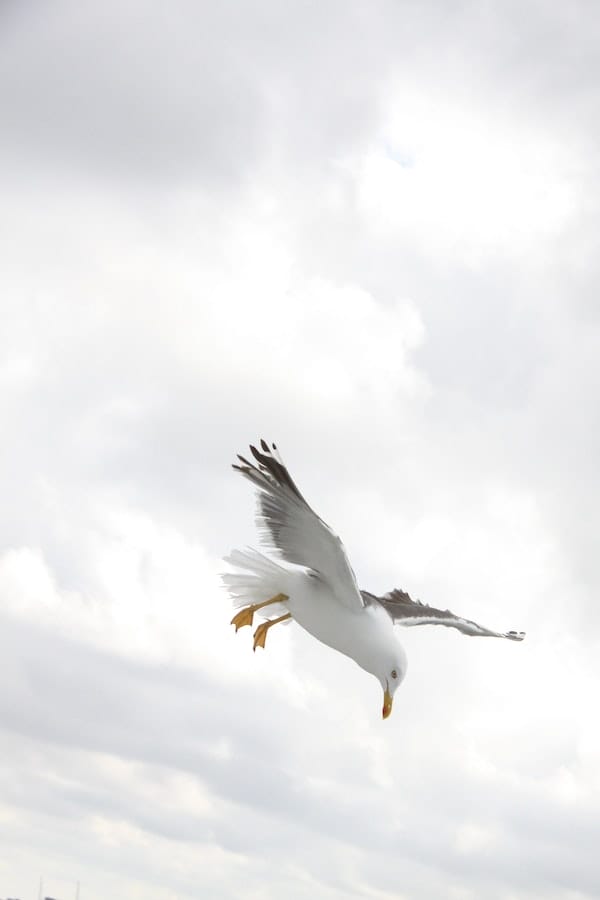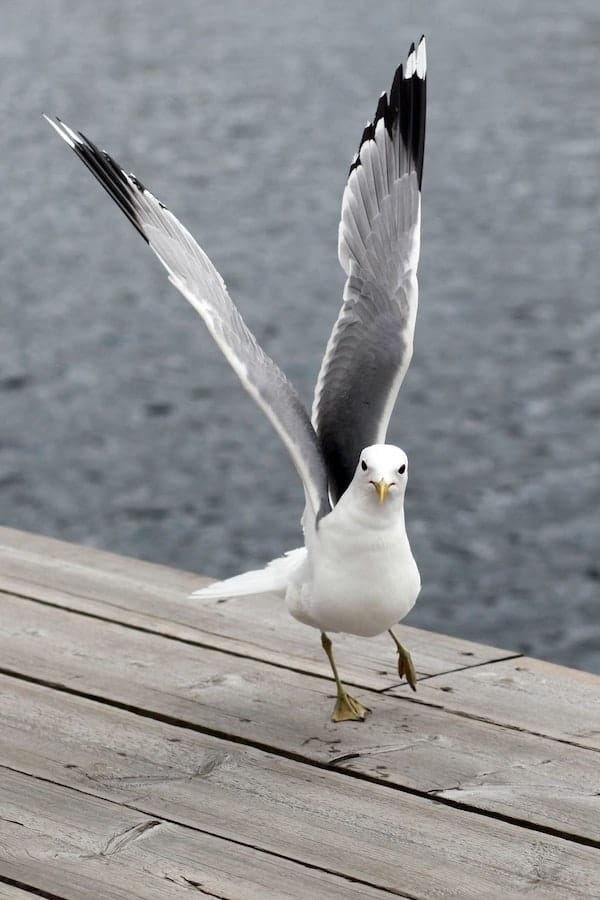
Seagulls are some of the most familiar birds we can observe in coastal areas around the world.
Their intelligence and resourcefulness make them fascinating creatures, and there is much more to learn about these curious birds.
Here are some interesting facts about seagulls that you may not know.
Fact #1: Seagulls are highly social birds.
Seagulls tend to form large colonies of up to several thousand birds in which they nest and forage for food.
They communicate with each other vocally, and many species even engage in elaborate mating rituals.
Seagulls are also highly cooperative when it comes to finding food, often working together as a team to catch prey or scavenge for food.
As a result, seagulls are often seen in large groups, but they can also be found alone or in pairs.
Seagulls will even join forces with birds of other species to take advantage of available resources.
Fact #2: Seagulls have impressive flying abilities.

Seagulls can fly at speeds of up to 55 mph and can remain in the air for extended periods of time without needing to rest or land.
They can also change direction quickly and easily, allowing them to dodge obstacles and maneuver around their environment with ease.
Seagulls can remain in the air for so long because they are incredibly efficient flyers, meaning that they expend very little energy while in flight.
This efficiency comes from their unique body shape, which allows them to take advantage of rising currents of air to stay aloft.
Fact #3: Seagulls have excellent eyesight.
Seagulls have an incredible vision that allows them to hunt and forage for food effectively.
They can spot potential prey from long distances, and their eyes are sensitive enough to detect the slightest movement in the water below.
Seagulls also have excellent night vision, which allows them to feed during low-light conditions.
In addition, they have a large field of vision which enables them to scan their surroundings and spot potential threats easily.
Seagulls are also capable of distinguishing different colors, allowing them to identify food and predators more efficiently.
Fact #4: Seagulls can live for up to 30 years.
Seagulls are surprisingly long-lived birds, with some species able to live for upwards of 30 years in the wild.
This is impressive, considering their nomadic lifestyle and the fact that they must compete with other birds for food and nesting sites.
Seagulls also possess a strong homing instinct, which helps them to return to their colony after foraging or migrating.
As a result, seagulls can form lifelong bonds with other members of their colony, allowing them to remain in the same area for much of their life.
This is why seagulls can live longer than many other species.
Fact #5: Seagulls are omnivorous.
Seagulls are incredibly adaptable when it comes to their diet and can eat almost anything that they come across.
While some species prefer to dine on fish, others will eat insects, crustaceans, and even garbage.
They will also feed on small mammals and birds if the opportunity presents itself.
Seagulls are also capable of scavenging for food, so they can often be seen around beachfront restaurants or areas where humans dispose of their waste.
This adaptability means that seagulls can survive in almost any environment and are rarely left wanting food.
Fact #6: Seagulls are highly intelligent.

Seagulls have impressive cognitive abilities that allow them to problem-solve and learn from their experiences.
This intelligence makes them well-suited for life in the wild, as they can navigate complex environments and adjust their behaviors accordingly.
Seagulls are also known to have excellent memories, being able to recall past events and remember where they found food in the past.
This intelligence makes them formidable predators and allows them to outwit other birds or animals when attempting to get a meal.
As a result, seagulls are some of the most intelligent birds in the world.
- Related post: Best Ways To Name Your Pet Seagull
- Related post: Bird Names for Naming Your Pet Bird
Fact #7: Seagulls can drink salt water.
Seagulls can survive in environments with limited access to fresh water, as they possess the remarkable ability to drink saltwater.
This is due, in part, to the special kidney system that enables them to concentrate and expel the excess salt from their bodies.
This incredible ability allows seagulls to survive in locations where few other birds can, such as coastal areas and islands with limited access to freshwater sources.
Seagulls also have a special gland near the bill that purifies salt from their body when they drink saltwater, allowing them to consume it without any ill effects safely.
This remarkable adaptation makes seagulls one of the most successful birds in the world.
Fact #8: Seagulls stand on one leg to keep warm.
Seagulls have an interesting habit of standing on one leg to conserve heat and keep their body temperature regulated.
This is because seagulls are especially sensitive to cold temperatures and must find ways to make the most of whatever warmth is available.
Standing on one leg helps seagulls minimize the amount of exposed surface area, allowing them to remain relatively warm despite the cold temperatures.
Seagulls will also huddle together and fluff their feathers to trap heat between their bodies.
This behavior helps them survive even in very cold climates where other birds would struggle to stay warm.
Fact #9: Seagulls have a wide variety of calls and sounds.
Seagulls are known for their distinct crying or screaming sound, but they actually possess an impressive range of vocalizations.
Seagulls use different calls to communicate with one another, such as alarm and distress calls or social calls like mating signals.
Seagulls also have various territorial calls that they use to assert dominance over other birds in their area.
Additionally, seagulls can produce a wide range of melodic songs, which are often heard in the evening as they roost for the night.
This impressive range of vocalizations serves to make seagulls more adaptable and helps them to survive in a wide variety of environments.
Fact #10: Seagulls mate for life.

Seagulls are one of the few species of birds that form pair bonds and mate for life.
Once a seagull has found its mate, they remain together in monogamous relationships.
The pair will work together to build nests and raise young, with both parents taking part in the parenting duties such as incubating eggs and feeding chicks.
This kind of behavior is very rare among birds, demonstrating how seagulls are some of the most social and intelligent avians in the world.
Additionally, this tendency to mate for life helps to ensure that the species can remain strong by promoting genetic diversity and passing on their traits to future generations.
Fact 11: Seagulls are found on every continent except Antarctica.
Seagulls have a remarkable ability to adapt and survive in almost any environment.
As a result, they can be found on nearly every continent in the world – with the exception of Antarctica.
Seagulls are especially common in coastal areas, where they can feed on plentiful fish and shellfish.
Seagulls also inhabit inland lakes and ponds, where they forage insects and other small prey.
In some places, seagulls have become so numerous that they are considered pests.
Despite this, seagulls remain one of the most resilient and adaptable species, and they are a beautiful addition to any landscape.
Overall, seagulls are incredibly fascinating creatures.
With their remarkable adaptations, they have become some of the most successful birds in existence, and they continue to be a source of wonder and delight for people around the world.
From their unique ability to stand on one leg to their tendency to mate for life, seagulls offer us a glimpse into the remarkable diversity of nature and remind us that the world is full of unexpected surprises.


GIPHY App Key not set. Please check settings